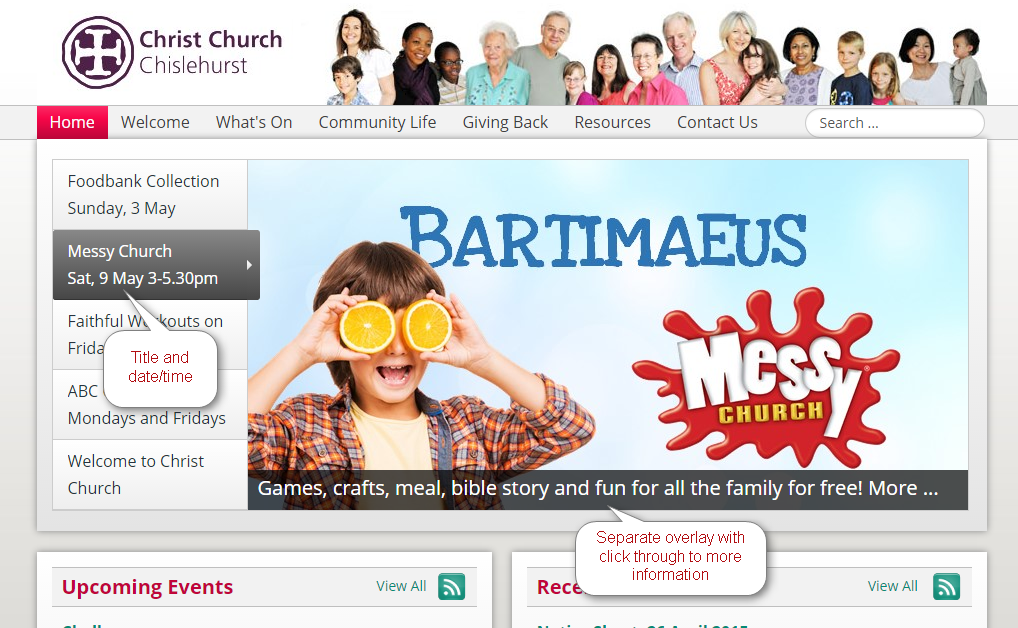Difference between revisions of "Website Banner Guidelines"
(→Banner specification and quality standards) |
(→Banner specification and quality standards) |
||
| Line 12: | Line 12: | ||
*Width: 720 pixels | *Width: 720 pixels | ||
*Size: 50-100 kilobytes | *Size: 50-100 kilobytes | ||
| − | *Format: [http://en.wikipedia.org/wiki/JPEG JPEG] or [http://en.wikipedia.org/wiki/Portable_Network_Graphics PNG] | + | *Format: [http://en.wikipedia.org/wiki/JPEG JPEG] (if photo heavy) or [http://en.wikipedia.org/wiki/Portable_Network_Graphics PNG] (if text heavy) |
As the banners are so prominent on the front page,''' every banner should look professional and friendly'''. In addition, it should be easy to read the banner in the time that the banner is shown on the webpage which is only a few seconds. Here are some dos and don'ts: | As the banners are so prominent on the front page,''' every banner should look professional and friendly'''. In addition, it should be easy to read the banner in the time that the banner is shown on the webpage which is only a few seconds. Here are some dos and don'ts: | ||
Revision as of 23:12, 28 November 2012
If you would like to promote your event, course, activity, etc. on the front page of the web site, please email the Website Team with a draft banner and additional relevant information that will be required depending on the type (see Promotion Guidelines). However, the Website Team don't decide which banners will appear on the front page, this will normally be decided in the Monday staff meetings.
Here is an example banner:
Banner specification and quality standards
Once approved, please send a banner that meets the specification and quality standards as detailed below. The Website Team can help with producing such a banner from a file in another format.
- Height: 350 pixels
- Width: 720 pixels
- Size: 50-100 kilobytes
- Format: JPEG (if photo heavy) or PNG (if text heavy)
As the banners are so prominent on the front page, every banner should look professional and friendly. In addition, it should be easy to read the banner in the time that the banner is shown on the webpage which is only a few seconds. Here are some dos and don'ts:
- Do use a professionally created picture. If you don't have one, consider buying one from stock site, such as iStock Photo for a small fee (typically a few pounds).
- Do make sure that the banner picture fills the whole banner space, not only part of it.
- Do include a title in the banner with a large font. Also, if this is an event, please include event details on the banner. Visitors to the website should be able to get all key details from the banner.
- Do consider how the banner will look in the context of the front page.
- Don't use low resolution images that show pixelation or blurriness.
- Don't use low constrast writing which may be difficult to read.
- Don't use stylised clipart.
- Don't Click here for more information.
- Don't load the banner with text. Remember that it will only be visible for a few seconds.
- Don't reduce the size of the banner so much that compression artefacts are clearly visible in JPEG image files. Please note that PNG image file never show compression artefacts.
Here is an example of a good banner:
Although the following banners have a high quality background, there are a number improvements that could be made:



